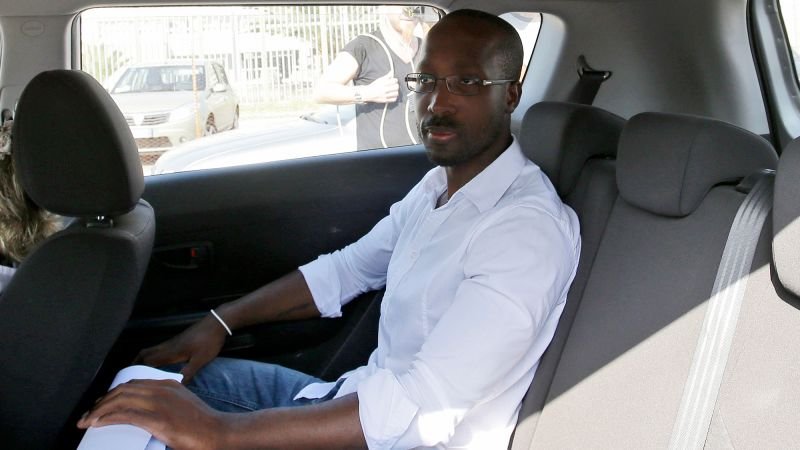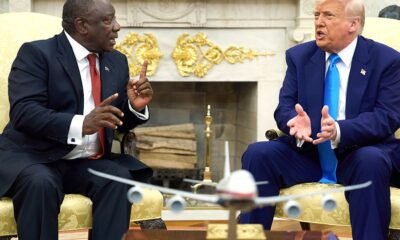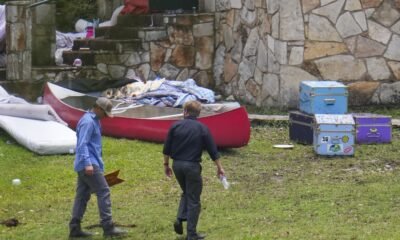CNN
—
There is often a gulf between what Russian President Vladimir Putin says and what he actually means.
Asked about the US-backed proposal for a 30-day ceasefire in Ukraine, Putin gave a long and convoluted answer during his Thursday news conference. Some sentences were made-for-TV, with short quotes that sounded very favorable – when seen out of context – to the Trump administration’s plan, which Ukraine has already agreed to.
Early on in his answer, Putin said “we agree with the proposal” – a quote that made headlines across the world. But he went on to make it clear that Moscow will not agree to an actual deal any time soon.
In his full response, Putin effectively shut down the idea – demanding concessions from Kyiv, raising numerous questions and repeating the maximalist demands that Russia has held since it launched its full-scale invasion of Ukraine in 2022.
Trump himself commented positively on Putin’s reaction to the ceasefire proposal, saying in an upbeat tone that it was “promising… but it wasn’t complete.”
But a closer look at what Putin said makes it clear that Russia is stalling and remains entrenched in its long-held positions:
“We agree with the proposal to cease hostilities but we have to bear in mind that this ceasefire must be aimed at a long-lasting peace and it must look at the root causes of the crisis.” – Putin
It’s not the first time Putin has urged eliminating what he calls the “root causes” of the war, and the Kremlin has previously claimed the current democratically elected Ukrainian government is part of those.
One of the Kremlin’s rationales for the war was that Ukrainian President Volodymyr Zelensky’s election was illegitimate.
Putin would instead like to see a pro-Russian leader installed in Ukraine. (In recent weeks, Trump has echoed the Kremlin’s calls for Zelensky to be replaced, going as far as claiming that the Ukrainian president is a dictator.)
The “root causes” also refer to the Kremlin’s claims that Russia is threatened by NATO expansion after the Cold War. That reflects Putin’s desire to see the military alliance withdraw from former Communist states that were part of the Soviet sphere of influence, such as Poland, Romania and the Czech Republic.

In the past, he has falsely claimed that NATO made a commitment not to expand eastwards after the fall of the USSR. In fact, NATO has always had an open-door policy.
Putin has repeatedly used NATO as an excuse for his invasion of Ukraine and demanded that Kyiv is blocked from joining the alliance and accept permanent neutrality.
“To Putin, the ‘root cause’ of the conflict is Ukraine’s desire to be an independent country and choose its own path in domestic and foreign policy,” said Brian Taylor, a political science professor at Syracuse University. “Further, he pointed to ‘nuances’ and proceeded to ask at least 16 questions about the details of any ceasefire agreement.”
“Who will give orders to cease hostilities and what will be the price? Who will determine who violated it where and how over a 2,000- kilometer (1,200-mile) stretch (of the frontline)? And who will blame this violation on whom later? These are all questions that require painstaking research from both sides.” – Putin
The Russian president questioning how a ceasefire would be implemented effectively restates his opposition to European proposals to put peacekeeping forces on the ground in Ukraine in the event of a deal.
The Kremlin has previously said it would be unacceptable for troops from NATO countries to be present in Ukraine, even under national flags. On Thursday, Russia’s foreign ministry spokesperson went further, saying Moscow would consider “any” foreign military presence in Ukraine “unacceptable.”

Putin then called for “painstaking research from both sides” suggests that he intends to drag out negotiations for a long time.
His stalling could be a tactic to buy time for Russia’s advancement in the Kursk region, where Ukraine still occupies some territory. Russian forces have made swift moves this week to reclaim ground in Kursk, which could remove one of Kyiv’s only bargaining chips as peace talks progress.
“Regarding Ukraine’s readiness to cease hostilities –- you know, the American-Ukrainian meeting in Saudi Arabia may outwardly look like a decision made by the Ukrainian side under American pressure. But in fact, I am absolutely convinced that the Ukrainian side should have asked the Americans for this in the most insistent manner, based on the situation that is developing on the ground.” – Putin
Here, Putin is arguing that Ukraine – not the United States – is actually the side pressing for a ceasefire.
The Trump administration, however, has repeatedly emphasized its desire for a quick resolution to the war and publicly said Ukraine doesn’t hold any cards in the peace negotiations. “I think we’re going to be in very good shape to get it done. We want to get it over with,” Trump said in the Oval Office on Thursday night after Putin made his comments.
Putin reiterated at several times during his Thursday news conference the Kremlin’s argument that a temporary 30-day ceasefire would benefit Ukraine, potentially allowing the country to regroup and have more weapons delivered. (Russia would also benefit from regrouping.)

That may be an attempt to further the idea that Zelensky doesn’t want to achieve long-term peace – a narrative Russia is pushing despite invading Ukraine unprovoked in 2014 and launching a full-scale invasion in 2022.
“It seems to me that it would be very good for the Ukrainian side to achieve a truce for at least 30 days and we are all for it, but there are nuances.” – Putin
Saying Russia is “all for it” but then calling for drawn-out negotiations and a discussion of “nuances” is a good reflection of Putin’s position on a ceasefire:
Did the Russian leader want to sound favorable to Trump, expressing solidarity with his position? Yes.
Did Russia actually shift on any of its previous demands? It doesn’t appear so.
“Putin’s answer seems carefully crafted to sound like a ‘yes’ to Trump but be a ‘no’ in practice, unless Ukraine is forced to submit to Russia’s demands,” Syracuse’s Taylor said.



























